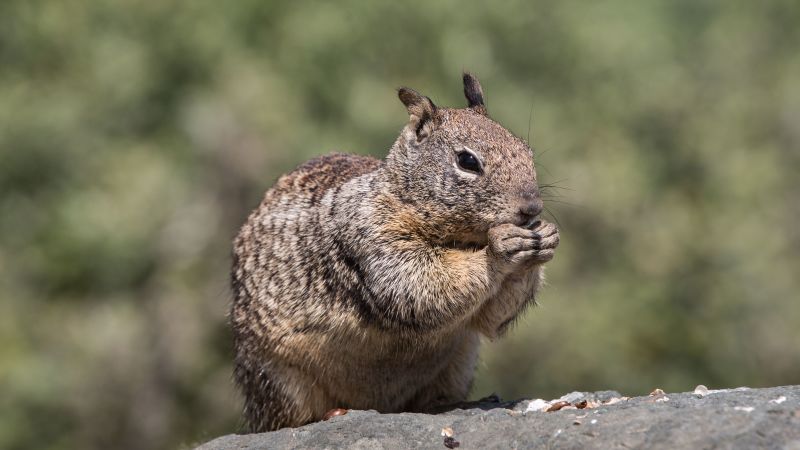The recent findings published in the Journal of Ethology reveal a remarkable shift in the behavior of California ground squirrels, a species traditionally known for their herbivorous diet. This research uncovers evidence of these squirrels acting as opportunistic carnivores, demonstrating the capability to hunt, kill, and consume voles, a notable change from their expected dietary habits. The study was part of the Long-Term Behavioral Ecology of California Ground Squirrels Project, conducted at Briones Regional Park in Contra Costa County, California. Renowned for their adaptability, these squirrels are native to the state’s grasslands, and the current research sheds light on how they modify their behavior in response to ecological pressures, particularly during a spike in vole populations.
Throughout the past decade, specific regions in Northern California have experienced invasive vole infestations. As detailed by the authors of this study, Briones Regional Park has seen a sharp increase in the vole population, leading researchers to closely monitor the feeding habits of the California ground squirrels in relation to this environmental shift. Historically categorized as herbivores or granivores, the discovery that these squirrels have devolved into active predators marks a significant new understanding of their ecological roles. Jennifer Smith, an associate professor of biology at the University of Wisconsin-Eau Claire and the lead author of the study, emphasized this finding as transformative in reshaping our perceptions of commonly known mammalian species like squirrels.
This research highlights a broader ecological principle: the capacity of wildlife to adapt to environmental changes, including the impacts of human activity such as climate change. Smith noted how these squirrels exemplify resilience and flexibility, positioning them as important players in their ecosystems. Moreover, comprehending whether these carnivorous behaviors are influenced by social learning within the squirrel populations may provide insights into how various wildlife species could navigate the challenges posed by changing habitats.
During the study, conducted from June 10 to July 30, researchers employed live trapping methods for observing the squirrels. Detailed records were maintained, capturing information about each squirrel such as reproductive status and body mass, which allowed scientists to monitor the behaviors of marked individuals over time. The observational data gleaned indicated a surprising frequency of interaction between ground squirrels and voles, with a staggering 42% of these encounters involving the squirrels engaging in active predation.
Smith remarked on the prompt adaptation exhibited by these ground squirrels in response to the sudden availability of vole prey, noting that their ability to shift from their usual diet to opportunistically consume voles in such a short timeframe is astonishing. These interactions not only included predatory hunts but also social behaviors, revealing complex dynamics that encompassed positive engagements as well as competitive encounters. The study documented a variety of interactions, underscoring the intricate relationships formed between the species.
John Koprowski from the University of Wyoming, who did not participate in the research, highlighted the implications of these findings for understanding predator-prey dynamics. The presence of California ground squirrels as new predators may serve ecological purposes, particularly by managing vole populations that can often burgeon to pest proportions. This nuanced observation of dietary adaptations, termed dietary plasticity, showcases the squirrels’ ability to harness necessary resources when available, a vital trait in the face of fluctuating environmental conditions.
These behaviors indicate a response to a surplus in available protein, suggesting that as food resources become limited or competitive, these squirrels are capable of shifting their dietary strategies to ensure survival. While seemingly alarming, this new carnivorous behavior is an expected ecological phenomenon, revealing the dynamic interactions within the ecosystem.
The researchers’ findings pave the way for further inquiry into the adaptive behaviors of different mammalian species, especially under the strains of environmental changes labeled as ‘human impacts.’ As Smith eloquently stated, this adaptability can highlight the resilience of specific species and provide critical knowledge applicable to conservation efforts as the planet continues to undergo rapid changes. The take-home message emphasizes the critical nature of adaptability in wildlife: species that can adjust their behaviors may thrive, while others failing to adapt may face risk of extinction. Intended as a call to action, the study promotes understanding and further exploration into these resilience processes inherent within wildlife, underscoring the need for informed conservation strategies.



